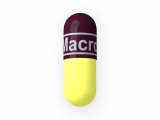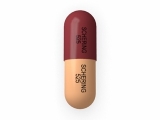Pharmacy abbreviations and symbols
Pharmacy is a complex field that requires a thorough understanding of various abbreviations and symbols that are used in prescriptions and medication labels. These abbreviations and symbols communicate important information to pharmacists, doctors, and patients, ensuring safe and effective use of medication.
One common abbreviation used in pharmacies is "PO," which stands for "per os," meaning "by mouth." This abbreviation is used to indicate that a medication should be taken orally. Another common abbreviation is "PRN," which stands for "pro re nata," meaning "as needed." This abbreviation is used to indicate that a medication should be taken as necessary, rather than on a regular schedule.
Symbols are also commonly used in pharmacy settings. For example, the symbol "±" is used to indicate a range of values. This symbol is often seen on medication labels to indicate the acceptable range of dosage for a particular medication. Another common symbol is the "Rx" symbol, which is derived from the Latin word "recipe" and is used as a medical symbol to indicate that a prescription is needed for a particular medication.
Pharmacy Abbreviations: A Brief Overview
Understanding pharmacy abbreviations and symbols is essential for both healthcare professionals and patients. These abbreviations are commonly used in prescriptions, medication orders, and medical records to ensure clear and concise communication.
Pharmacy abbreviations are short forms of drug names, dosages, instructions, and other important information. They help streamline the documentation process and prevent errors in medication administration. It is crucial to be familiar with these abbreviations to provide safe and effective pharmaceutical care.
Some common pharmacy abbreviations include:
- PO: This abbreviation stands for "by mouth" and indicates that the medication should be taken orally.
- QD: Short for "once daily," this abbreviation indicates that the medication should be taken once a day.
- BID: This abbreviation stands for "twice daily" and means that the medication should be taken two times a day.
- TID: Short for "three times daily," this abbreviation indicates that the medication should be taken three times a day.
It is important to note that some abbreviations can be easily confused if not properly understood. For example, "QD" can be mistaken for "QID," which means "four times daily." This can lead to incorrect dosing and potential harm to the patient.
To avoid confusion and ensure patient safety, healthcare professionals should always verify and clarify unclear abbreviations before administering medications. Additionally, patients should ask their healthcare providers to explain any unfamiliar abbreviations to prevent medication errors and improve medication adherence.
In conclusion, understanding pharmacy abbreviations is crucial for effective communication in the healthcare setting. These abbreviations help facilitate accurate documentation, prevent errors, and improve patient safety. Healthcare professionals and patients must familiarize themselves with common pharmacy abbreviations to ensure the safe and appropriate use of medications.
Commonly Used Pharmacy Symbols
In the field of pharmacy, various symbols are used to convey information and instructions. These symbols help pharmacists and pharmacy technicians communicate important details efficiently and accurately. Some of the commonly used pharmacy symbols include:
Rx symbol
The Rx symbol, also known as the Prescription symbol, is one of the most recognized symbols in the pharmacy world. It originated from the Latin word "recipe" which means "take". The Rx symbol is used to indicate that a prescription or medication order is being given.
Þ symbol
The Þ symbol, also known as the Obelus symbol, is used in pharmacy to indicate that a medication should be discontinued or tapered off gradually. It is often seen alongside a dosage regimen to indicate the period during which the medication should be reduced or stopped.
+ symbol
The + symbol is used to indicate that a medication contains a combination of multiple active ingredients. For example, a medication labeled as "Acetaminophen 325mg + Codeine 10mg" indicates that it contains both acetaminophen and codeine.
< symbol
The < symbol, also known as the Less Than symbol, is used to indicate that the medication should be taken in a smaller amount. For example, if the prescription indicates "Take <5ml", it means the patient should take less than 5 milliliters of the medication.
> symbol
The > symbol, also known as the Greater Than symbol, is used to indicate that the medication should be taken in a larger amount. For example, if the prescription indicates "Take >10mg", it means the patient should take more than 10 milligrams of the medication.
These are just a few examples of the symbols commonly used in the field of pharmacy. It's important for pharmacists, pharmacy technicians, and other healthcare professionals to be familiar with these symbols in order to accurately interpret and communicate medication instructions.
The Importance of Understanding Abbreviations and Symbols
Abbreviations and symbols are an integral part of the healthcare industry, especially in the field of pharmacy. These shorthand notations are used to quickly and efficiently communicate important information between healthcare professionals. Whether you are a pharmacist, pharmacy technician, or even a patient, understanding these abbreviations and symbols is crucial for ensuring safe and accurate medication use.
One of the key reasons why it is important to understand abbreviations and symbols in pharmacy is to prevent medication errors. Prescriptions and medication labels often contain various abbreviations and symbols that indicate dosage instructions, frequency of use, and specific directions. If these abbreviations and symbols are misinterpreted or misunderstood, it can lead to serious consequences, such as the wrong dosage being administered or the medication being taken incorrectly.
Another reason why understanding abbreviations and symbols is important is to enhance effective communication within the healthcare team.
In a pharmacy setting, healthcare professionals often work as part of a team, which includes pharmacists, physicians, nurses, and other staff members. Using abbreviations and symbols allows for quick and concise communication, saving time and reducing the risk of miscommunication. When everyone on the team is familiar with these abbreviations and symbols, it facilitates smooth communication and ensures that everyone is on the same page.
Moreover, understanding abbreviations and symbols in pharmacy helps patients navigate their medications safely and effectively. Patients often receive prescriptions with abbreviated instructions or medication labels with symbols that provide important information about their medications. When patients have a solid understanding of these abbreviations and symbols, they can read and follow the instructions correctly, ensuring they receive the intended benefits of their medications and avoid potential risks.
In conclusion, the importance of understanding abbreviations and symbols in pharmacy cannot be overstated. It is essential for preventing medication errors, enhancing communication within the healthcare team, and promoting patient safety. Healthcare professionals must stay updated with the latest abbreviations and symbols used in the field and educate patients about their meanings to ensure the safe and effective use of medications.
Decoding Abbreviations and Symbols in Prescriptions
When you receive a prescription from your doctor, you may notice a variety of abbreviations and symbols that can be confusing to understand. However, decoding these abbreviations and symbols is crucial in ensuring that you take the correct medication and dosage.
Common Abbreviations
One of the most common abbreviations you may come across is "mg," which stands for milligram. This abbreviation indicates the amount of the medication that you should take in milligrams. Another common abbreviation is "PO," which stands for oral administration, indicating that the medication should be taken by mouth.
There are also abbreviations for frequency, such as "BID" (twice a day) and "QD" (once a day). It's important to understand these abbreviations to ensure you take the medication at the prescribed intervals.
Pharmacy Symbols
In addition to abbreviations, you may also encounter various symbols on your prescription. One common pharmacy symbol is the "Rx" symbol, which is derived from the Latin word "recipere," meaning "to take." This symbol indicates that the prescription is for a medication.
Another important symbol is the medication strength symbol, which typically appears as a number followed by a lowercase "x." This symbol represents the concentration or potency of the medication.
Decoding and Safety
Understanding the abbreviations and symbols in prescriptions is essential for patient safety. If you are unsure about any abbreviation or symbol, it is important to consult with your pharmacist or healthcare provider before taking the medication.
It's worth noting that some abbreviations and symbols may vary depending on the country or healthcare system. Therefore, it is crucial to familiarize yourself with the specific abbreviations and symbols used in your region.
By decoding the abbreviations and symbols in prescriptions, you can ensure that you take the correct medication and dosage, promoting your health and well-being.
Helpful Resources for Learning Pharmacy Abbreviations and Symbols
1. Pharmacy Abbreviations and Symbol Guides
If you're looking to learn and understand pharmacy abbreviations and symbols, there are several helpful guides available. These guides provide comprehensive lists of common abbreviations and symbols used in the pharmacy field, along with their meanings. Some popular guides include:
- Pharmacy Abbreviations and Acronyms: This guide offers a comprehensive list of pharmacy abbreviations and acronyms along with their explanations. It covers a wide range of abbreviations used in medication prescriptions, medical records, and drug packaging.
- Pharmacy Symbol and Prescription Design Guide: This guide focuses on the different symbols used in pharmacy, such as the Rx symbol and other prescription design elements. It provides an in-depth explanation of each symbol and its significance in the pharmacy profession.
- Pharmacy Abbreviations and Terminology Handbook: This handbook serves as a quick reference for pharmacy abbreviations and terminology. It includes a glossary of commonly used terms and their definitions in the pharmacy field.
2. Online Databases
In addition to printed guides, there are also various online databases available that can assist in learning pharmacy abbreviations and symbols. These databases allow users to search for specific abbreviations or symbols and provide detailed explanations and examples of their usage. Some popular online databases include:
- Pharmacy Abbreviations Database: This online database allows users to search for specific pharmacy abbreviations and provides comprehensive explanations and examples.
- Medical Symbol Database: Although not specific to pharmacy, this database includes a wide range of medical symbols, including common symbols used in the pharmacy field.
3. Educational Websites and Apps
Many educational websites and mobile apps offer interactive learning resources for understanding pharmacy abbreviations and symbols. These resources often include quizzes, flashcards, and practice exercises to help users reinforce their understanding. Some popular educational websites and apps for pharmacy abbreviations and symbols include:
- PharmaQuiz: This app provides interactive quizzes on pharmacy abbreviations, symbols, and terminology. Users can test their knowledge, track their progress, and review explanations for correct and incorrect answers.
- Pharmacy Abbreviations Flashcards: This website offers flashcards for learning pharmacy abbreviations and their meanings. Users can practice with virtual flashcards or print them for offline study.
4. Pharmacy Textbooks
In-depth knowledge of pharmacy abbreviations and symbols can also be gained through the study of pharmacy textbooks. Most pharmacy school curricula include comprehensive textbooks that cover all aspects of the profession, including abbreviations and symbols. These textbooks provide detailed explanations and examples, making them valuable resources for learning pharmacy abbreviations and symbols.
Follow us on Twitter @Pharmaceuticals #Pharmacy
Subscribe on YouTube @PharmaceuticalsYouTube





Be the first to comment on "Pharmacy abbreviations and symbols"